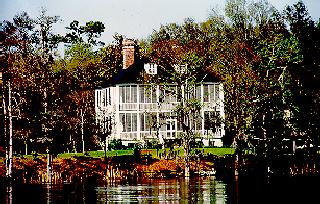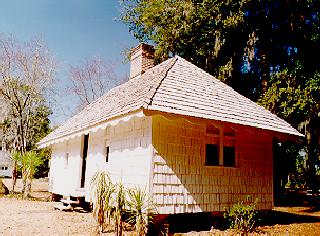
|
|
Birthplace of Thomas Lynch, Jr. Signer of The Declaration of independence. Hopsewee, a National Historic Landmark, is a preservation rather than a restoration and has never been allowed to fall into decay as it has always been cherished. Only four families have owned it, although it was built almost forty years before the Revolutionary War. A visit to Hopsewee on the North Santee River is like a step into a cool, still spot in history. Peace, quiet and a beautiful vista of golden river and the green and grey of moss-hung trees give one pause - and time for contemplation. Wooded trails add to the nature lover's pleasure. The house is a typical lowcountry rice plantation dwelling of the early eighteenth century, with four rooms opening into a wide center hall on each floor, a full brick cellar and attic rooms. The house has a lovely staircase: there is handcarved molding in each room , and the random width heart pine floors are almost 1 1/2 inches thick. Constructed on a brick foundation that is covered by scored tabby, the house is built of black cypress, which probably accounts for the fact that it is basically the same house the Lynches built over 250 years ago.  The two cypress shingled out-buildings were kitchens. Each has a large
fireplace on one side of the chimney and a double fireplace on the other.
The division allowed for a hot fire and a simmering fire. The construction
of these cabins mirrors the West Indies influence on the early colonists.
The two cypress shingled out-buildings were kitchens. Each has a large
fireplace on one side of the chimney and a double fireplace on the other.
The division allowed for a hot fire and a simmering fire. The construction
of these cabins mirrors the West Indies influence on the early colonists. Both Thomas Lynch, Sr., and Thomas Jr. were distinguished political figures and were the only father and son serving in the Continental Congress. However, Thomas, Sr., suffered a stroke and could not sign the Declaration of Independence. There is a space left on the document for his signature. The house and grounds are open to the public. Tues thru Fri, March through October. Open by chance or by appointment Nov- Feb. Admission |
